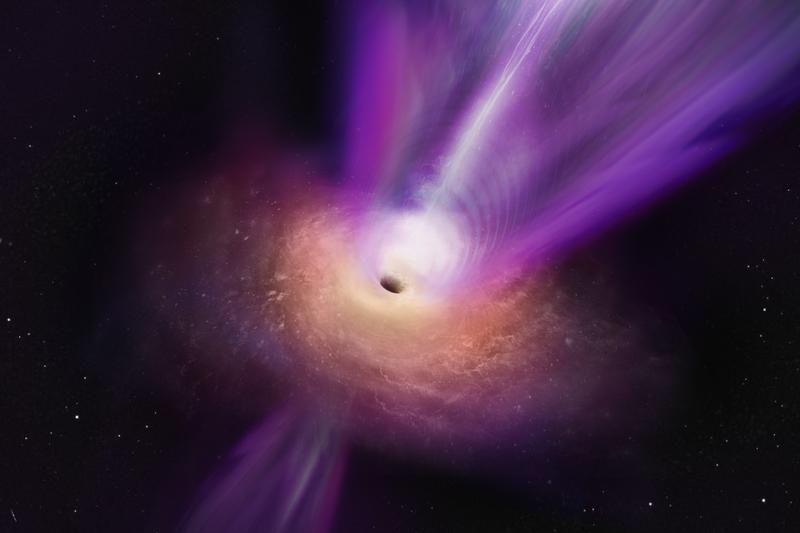Black hole and cosmic jet: researchers succeed in taking a unique picture
The black hole at the center of the galaxy Messier 87 is a cosmic phenomenon of gigantic proportions: M87 is more than 1,000 times heavier than the black hole at the center of the Milky Way. It was also the first black hole that scientists have successfully imaged.
Now M87 is again involved in a novelty: For the first time, a research team was able to directly demonstrate the connection between a black hole and the energy ray – called jet – ejected by it.
A research team with the participation of the Max Planck Institute for Radio Astronomy used a worldwide network of radio telescopes (Global mm-VLBI Array, GVMA for short), which was additionally reinforced with telescopes from Greenland and Chile, as if from one Press release from the science information service emerges.
Jets are jets of matter containing high-energy particles ejected from massive black holes. That sounds amazing at first, because black holes actually devour the matter in their immediate vicinity. As with the Caltech University can be read, however, a small part of the matter is not sucked in, but is shot into space in a straight stream from the edge of the black hole at almost the speed of light. Some jets even reach so far that they radiate out of their galaxy of origin.
This happens through magnetic forces or, according to a more recent theory, through shock waves, the cause of which has not been finally clarified. The jets are considered the source of cosmic rays and thus the fastest traveling particles in the universe. However, jets are not only observed with black holes, but also, for example, with the formation of protostars.
“Previously we’ve only seen the supermassive black hole and distant jet in separate images, but now we’ve captured a panoramic image of the black hole along with its jet at a new wavelength,” said Ru-Sen Lu of the Shanghai Astronomical Observatory quoted press release.
“Now we can see the jet exiting the emission ring around the black hole, and we can measure the ring’s diameter at a different wavelength,” says Thomas Krichbaum from the MPIfR Bonn.
GMVA+ALMA image of the central region of the black hole in Messier 87. (Image: R. Lu et al, Nature 2023)
There was also no direct image of matter falling into a black hole. This is different now thanks to the new images: “The large and thick ring that we now see can be explained by the gas that falls into the black hole.” The images could help to establish the connection between the matter falling into the black hole and better understand the ejected jet. Overall, the picture is a “milestone” and the culmination of the joint work. It was published in the journal Nature.
The black hole “M87” is to be further explored and mapped in high resolution. Measurements will be taken of the jet’s radio color and the black hole’s shadow, according to Jae-Young Kim of South Korea’s Kyungpook National University in Daegu. This work should also improve the performance of the Global Telescope Network (GMVA). Ten years ago, the combination of radio telescopes was able to see so clearly that a street sign in New York could be deciphered from Germany. as could be read on Deutschlandfunk.
A team from the University of Berkeley recently chose another way to get better images of M87: There, the six-year-old image of the Event Horizon Telescope was significantly improved using AI and machine learning.
Black holes have such a strong gravitational pull that no light can escape them. Therefore, direct recordings are actually impossible. Images are only possible by observing the stars, dust clouds and gases in the area. “Fortunately” the matter around a black hole is heated so much that it glows in X-rays, which in turn can be observed with appropriate telescopes.
There are still numerous unanswered questions, for example about the formation of supermassive black holes – or, of course, about their interior. Here are ten amazing facts you should know:

20 powerful false-color images from NASA of Earth and space



